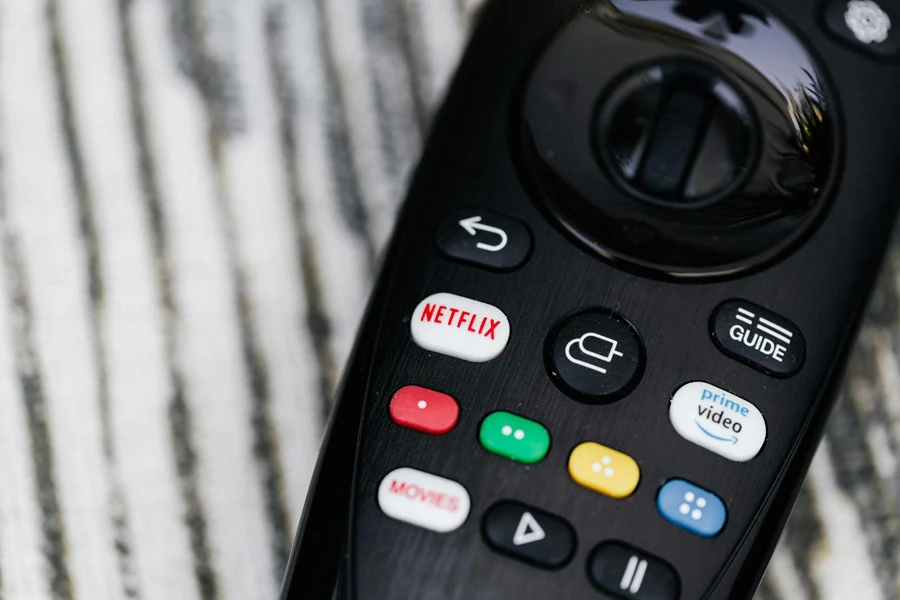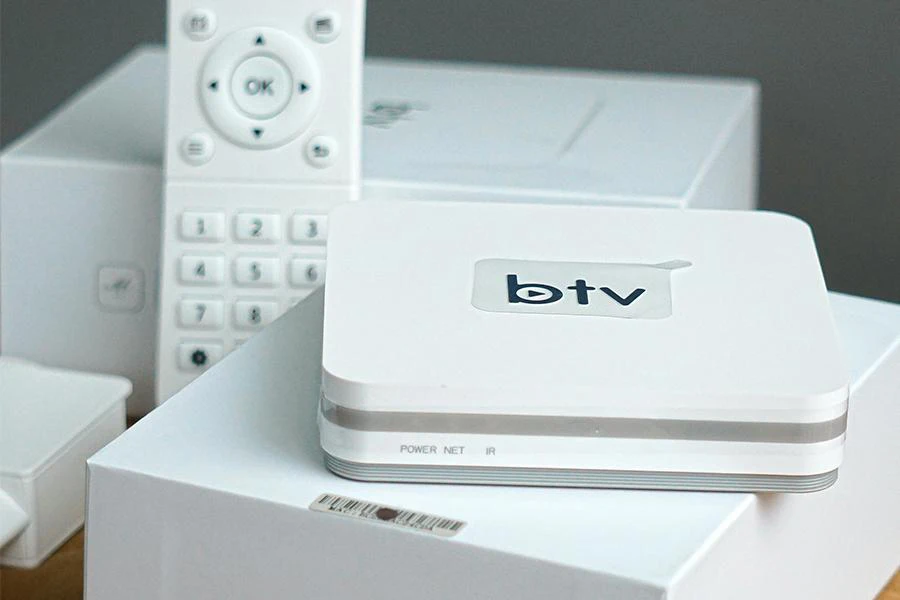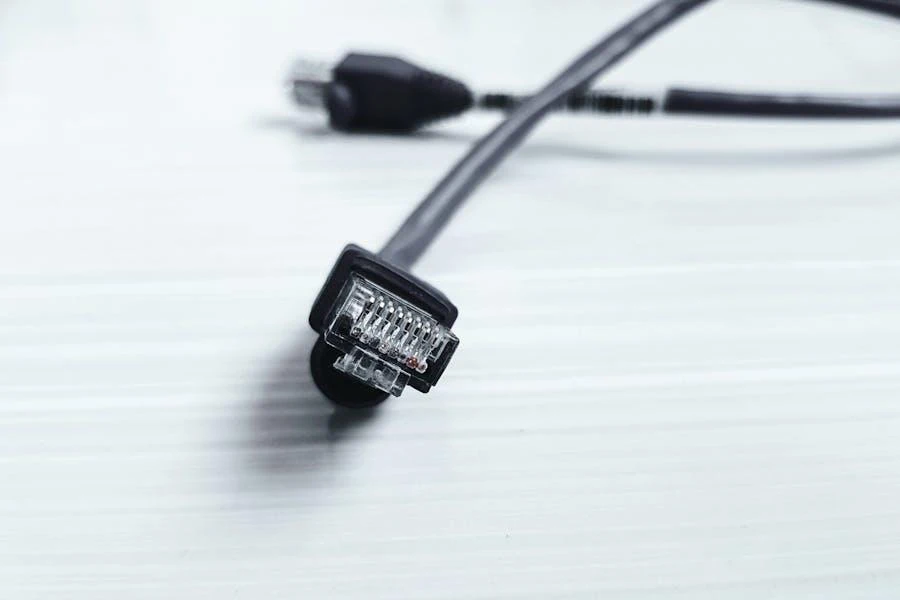Nowadays, most viewers are cutting the cord to watch content on streaming services. In fact, as of 2023, there were nearly 1.8 billion subscribers to online video streaming services globally.
Streaming media devices can turn just about any TV with an HDMI port into a smart device, allowing viewers with old TVs to watch content on their favorite streaming platforms.
And while most modern smart TVs and game consoles come with built-in streaming services, dedicated streaming media devices offer a better viewing experience. However, choosing a suitable streaming device can prove tricky due to the numerous options available.
So if you’re unsure which device will resonate with your buyers, this guide will explore what to consider when choosing streaming media devices in 2025.
Table of Contents
Types of streaming devices
Reasons to invest in a streaming device
What to look for in a streaming device
Discover a wide selection of streaming devices
Types of streaming devices

There are primarily two types of streaming media devices: streaming sticks and boxes. Streaming sticks or plug-in devices are tiny devices that typically resemble USB drives, but there are also some disc-shaped variants. As the name suggests, these devices plug into TV USB or HDMI ports.
On the other hand, streaming or set-top boxes are much larger than streaming sticks, and they connect to TVs via HDMI ports. Unlike their smaller counterparts, they offer more connections, such as HDMI, USB, and Ethernet ports.
Reasons to invest in a streaming device
Modern smart TVs provide similar functionality to streaming devices. So, why do many shoppers with smart TVs prefer streaming devices? Here are some reasons why:

1. Intuitive interfaces
Many streaming devices offer better interfaces than smart TVs. They have customizable home screens that are easy to navigate, resulting in a better user experience.
2. Frequent updates
Streaming devices receive regular updates to fix bugs, add new features, and enhance performance. In contrast, smart TVs rarely receive software updates, especially older models. This usually results in glitches and sluggish performance.
3. More content options
Smart TVs may lack some streaming services, particularly older models. In comparison, many streaming media devices offer access to major streaming services like Netflix, Disney+, and Amazon Prime Video.

4. Limited search features
Many smart TVs don’t allow users to search for content across multiple streaming services without navigating from one app to another. Top streaming devices allow viewers to search for content across various apps easily.
5. Portability
Streaming sticks such as the Roku Streaming Stick aren’t location-dependent. Viewers can carry them easily and enjoy their favorite content anywhere, making them ideal for people who travel often.
6. Private listening
Some streaming media devices, like the Roku Ultra, support private listening. Private listening allows users to listen to their favorite content through headphones without disturbing others. This feature makes streaming devices ideal for people who live in busy households.

What to look for in a streaming device
There’s no one-size-fits-all streaming device, as each comes with unique features. Here are key features buyers look for when shopping for streaming media devices:
① Operating system and ecosystem
Streaming devices run specific operating systems, such as Google’s Android TV, Roku’s Roku OS, or Apple’s tvOS, each with different interfaces and apps.
A streaming device’s operating system may arguably be the biggest deciding factor shoppers consider when selecting a streaming device, as many people prefer to stay within a particular ecosystem.
For instance, shoppers with Android devices might prefer Android streaming devices like the Chromecast, while those with Apple devices might prefer a set-top box like the Apple TV 4K.
② Connectivity
Streaming devices connect to TVs via HDMI ports, and most connect to the internet via Wi-Fi. However, some devices have Ethernet ports for wired network connections.

Generally, devices with Ethernet connections offer faster and more stable streaming than those solely supporting Wi-Fi. As a result, viewers with unstable internet connections who want to enjoy their favorite TV shows and movies without lag are likely to prefer devices with Ethernet ports.
③ Wi-Fi protocol
Most streaming devices support the 802.11ac or Wi-Fi 5 standard. However, a few models support the latest Wi-Fi 6 standard, which offers faster speeds.
While devices that support the Wi-Fi 5 standard are generally sufficient for most viewers, those with advanced routers that support the newer protocol might prefer streaming devices with Wi-Fi 6 support.
④ 4K video support
Most major streaming services have 4K content, and most new TVs support 4K video. In 2023, the 4K TV market was valued at over US$ 193.44 billion and in 2024, it’s expected to grow to US$ 229.83 billion.
Look for streaming devices that support 4K resolution to appeal to the rising number of viewers with 4K TVs who want to enjoy an immersive viewing experience.

⑤ Spatial audio support
Some streaming devices support more spatial audio formats than others. Spatial audio or 3D audio formats are designed to create a 3D surround experience, allowing listeners to enjoy nuanced sounds.
Some popular spatial audio formats supported by popular streaming services and devices include Dolby Atmos and DTS:X. Look for devices that support at least one or multiple spatial audio formats to appeal to audiophiles who prioritize sound performance when shopping for streaming media devices.
⑥ Search functionality
Most streaming devices have a remote with an embedded microphone to facilitate voice searches, eliminating the hassle of using an on-screen keyboard to perform searches.
Additionally, many models offer ”universal search,” which allows viewers to search for their favorite titles across multiple streaming services. Prioritize streaming media devices with these helpful search features to enable viewers to find their favorite content faster.

⑦ Customization options
Top streaming devices offer various customization features. Many allow users to add, delete, and reorder apps. Several also allow users to customize the home screen to put their favorite apps front and center.
And that’s not all. Some streaming devices also allow users to customize the appearance of their home screens.
Provide shoppers with streaming devices with multiple customization features to enable them to navigate across apps and personalize their user experience easily.
Discover a wide selection of streaming devices
Modern smart TVs come with the ability to access various streaming services. But their software often comes short compared to streaming devices.
Compared to smart TVs, streaming devices typically have better interfaces, wider content selections, and better performance. That’s why many viewers prefer using them to stream their favorite content.
Want to provide cord-cutters with high-quality streaming devices? Shop Alibaba.com for a vast collection of streaming devices.



